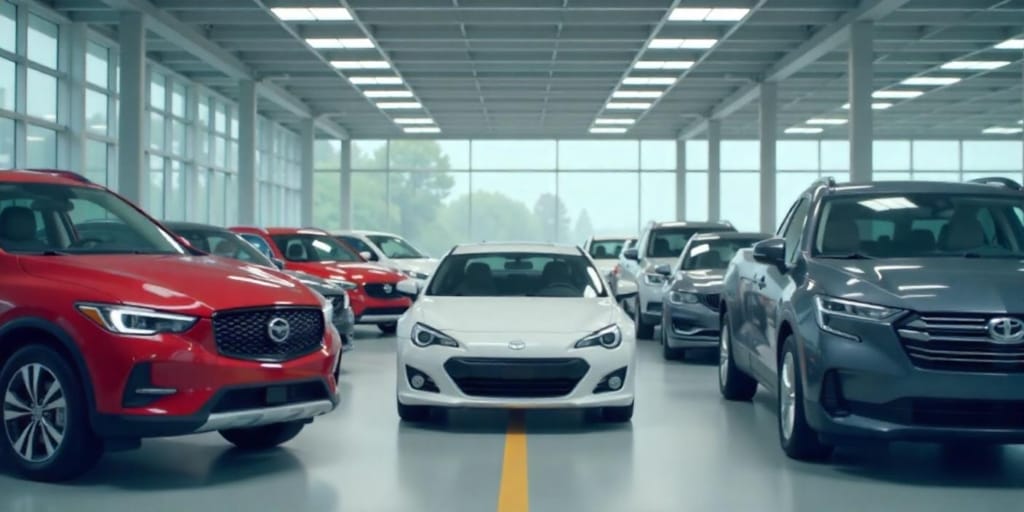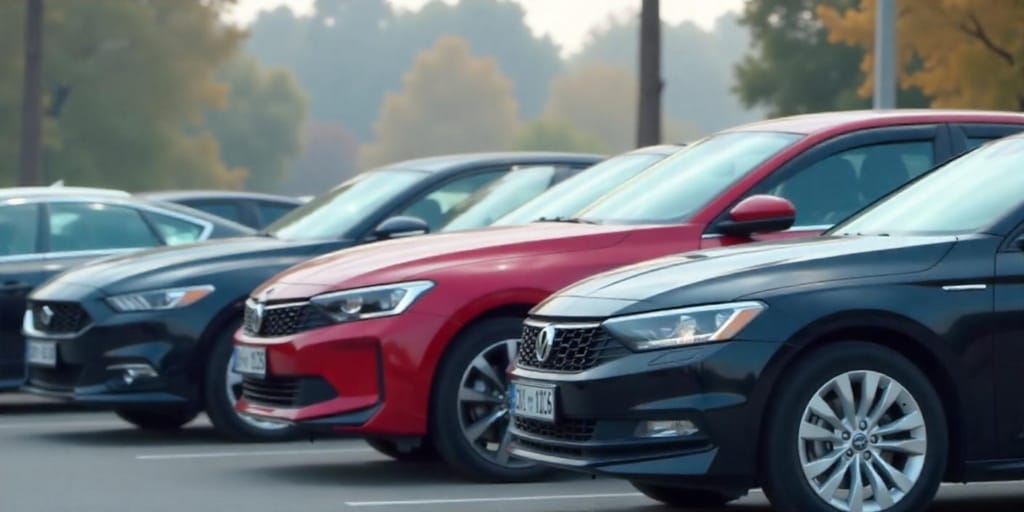Share This Article
Problem
Have you ever wondered why only a handful of companies have a commanding influence on exercise control over the global automobile industry? Whether you’re in the U.S., Europe, or Asia, the roads are ruled by the likes of Toyota, Ford, Volkswagen, and a select few others. It’s not by chance that these automakers hold such significant sway. In fact, the automobile industry is a textbook example of an oligopoly – a market structure where a small number of good control the majority of the market share.

Understanding why the automobile industry is considered an oligopoly is crucial, especially if you’re an investor, policy maker, or even a curious consumer. Knowing the dynamics behind this structure gives insight into pricing, innovation, and competition, which affect us all.
Let’s dive into why the auto industry is an oligopoly and what this means for the economy and consumers.
Agitation
Why should you care? Here’s why:
- Limited Choice: Despite hundreds of car models available, true competition is often limited to a few major players.
- High Prices: With limited competition, companies can sometimes set higher prices without losing customers.
- Slower Innovation: While automakers invest heavily in R&D, the oligopolistic nature can sometimes slow down the pace of breakthrough innovations.
- Global Dependence: The dominance of a few key players means global supply chains and economies are heavily reliant on their stability. Think of the chip shortage during the pandemic, which brought production to a halt for many automakers worldwide.
Now that the stakes are clear, let’s break down the factors that contribute to this oligopolistic nature.
Solution: The Core Reasons Behind the Oligopoly
1. High Barriers to Entry
- Starting an automobile company isn’t like opening a coffee shop. The upfront investment in factories, supply chains, skilled labor, and R&D is astronomical. According to a report by McKinsey, the average cost to develop a new car model ranges between $1 billion and $6 billion.
- Take Tesla as an example. Despite its success today, it took nearly two decades and billions in investment to achieve profitability. The financial and technological hurdles deter new players, leaving the field dominated by established giants.
2. Economies of Scale
- Major automakers benefit significantly from economies of scale. Producing cars in large volumes reduces the per-unit cost of production. For example:
- Toyota, the world’s largest automaker, produces over 10 million vehicles annually. Its scale allows it to offer competitive prices while maintaining profitability.
- Smaller players, on the other hand, struggle to compete on cost and pricing without such advantages.
- This inherent advantage reinforces the dominance of existing players and discourages new entrants.
3. Interdependence Among Firms
- In an oligopoly, firms are highly interdependent. Each automaker closely monitors its competitors’ pricing, features, and innovations. A single pricing move by one company can lead to a ripple effect across the industry. For instance:
- When Ford introduced its electric F-150 Lightning in 2021, it forced competitors like General Motors and Rivian to accelerate their own EV truck plans.
- Similarly, when Tesla cut its EV prices in 2023, other automakers like Hyundai and Volkswagen had to adjust their strategies to stay competitive.
- This interdependence shapes strategic decisions, ensuring the balance of power among major players remains relatively stable.
4.The action or process of making something stronger or more solid and Mergers
- Over the decades, the automobile industry has witnessed numerous mergers and acquisitions, further reducing the number of independent players. Key examples include:
- Stellantis: Formed in 2021 through the merger of Fiat Chrysler and PSA Group, Stellantis brought together 14 brands under one umbrella, including Jeep, Peugeot, and Dodge.
- Volkswagen Group: Volkswagen’s acquisition of Porsche, Audi, Lamborghini, and other brands solidified its position as a global powerhouse.
- Such the action or process of making something stronger or more solid allow companies to pool resources, share technology, and expand market reach, but they also reduce competition.
5. Heavy Regulation
- The auto industry is one of the most heavily regulated sectors. From emissions standards to safety requirements, compliance costs are significant. For example:
- In the European Union, automakers face stringent CO2 emission targets, with fines imposed for non-compliance. These regulations disproportionately impact smaller manufacturers, who lack the resources to adapt quickly.
- Similarly, in the U.S., the Corporate Average Fuel Economy (CAFE) standards push automakers toward fuel efficiency, which requires substantial investment in technology.
- These regulatory hurdles further entrench the dominance of established players who can afford to comply.

6. Brand Loyalty and Market Power
- Automobiles are high-involvement purchases, and consumers often stick to brands they trust. Major automakers have spent decades building reputations for reliability, performance, and innovation. Consider these examples:
- Toyota’s reputation for reliability ensures strong sales for models like the Corolla and Camry year after year.
- Tesla’s branding as a pioneer in electric vehicles has created a loyal customer base willing to pay a premium.
- This brand loyalty creates a self-reinforcing cycle, where established players continue to dominate while new entrants struggle to gain traction.
7. Global Supply Chain Control
- Major automakers have vast, integrated supply chains that span the globe. This control over resources gives them a significant edge:
- During the COVID-19 pandemic, companies like Toyota managed their supply chains more effectively than smaller competitors, ensuring production continuity.
- Conversely, startups and smaller automakers often face delays and cost overruns due to limited supplier networks.
- By maintaining tight control over supply chains, established players consolidate their market power.
- What Does This Mean for Consumers?
- The oligopolistic nature of the automobile industry has both pros and cons for consumers.
Advantage :-
- Quality and Reliability: Large automakers have the resources to invest in R&D, ensuring high-quality vehicles.
- Innovation: While slower than in highly competitive industries, innovation still happens. Electric vehicles and autonomous driving technology are prime examples.
Disadvantage :-
- Limited Pricing Competition: With fewer players, there’s less pressure to lower prices, leading to higher costs for consumers.
- Potential for Stagnation: Dominance by a few players can lead to slower adoption of disruptive technologies.
The Future of the Automobile Oligopoly
- The automobile industry is evolving, and several factors could disrupt its oligopolistic structure:
- Electric Vehicles (EVs): The shift toward EVs has opened the door for new players like Rivian, Lucid Motors, and even tech companies like Apple.
- Autonomous Driving: Companies like Waymo and Baidu are challenging traditional automakers in the race for self-driving cars.
- Global Supply Chain Shifts: Geopolitical tensions and sustainability concerns are forcing automakers to rethink supply chains, potentially leveling the playing field for smaller players.
- However, the established giants are not sitting idle. Companies like Volkswagen and General Motors are investing heavily in EVs and autonomous technology, ensuring they remain competitive in this new era.

Conclusion
The automobile industry’s status as an oligopoly is rooted in its high barriers to entry, economies of scale, and the dominance of a few key players. While this structure has ensured stability and quality, it has also limited competition and innovation in some areas. As the industry faces problems which interrupt an event from EVs, autonomous driving, and shifting consumer preferences, the balance of power could shift—but for now, the oligopoly remains firmly in place.
Understanding this dynamic is essential for anyone navigating the auto industry, whether as a consumer, investor, or policymaker. The next time you’re on the road, take a moment to consider the forces that shaped the car you’re driving. It’s more than just a mode of transport; it’s a product of one of the world’s most powerful oligopolies.




